Testing
Some argue winemaking is an art, requiring equal parts knowledge, problem-solving, and creativity. While this holds an element of truth, the process is buttressed by science. Chemicals and biological components interact in ways that direct winemaking activities, with testing an essential tool informing the winemaker.
There are five primary components of wine; acid, alcohol, sugar, tannin, and water. Having them in balance, results in a wine enjoyable to drink. Testing provides data informing the winemaker whether adjustments are necessary. The data combined with a subjective judgment of the winemaker, also informs certain handling techniques, necessary to bring the wine to a desired harmonious whole.
A good illustrative example of testing and judgment working side-by-side is knowing the acid level from testing, and the tannin level from tasting. Testing tannin levels isn’t practical for the home winemaker but due to its aggressive astringent and bitter nature, it is easy to judge by taste. Acid, which has a similar taste profile leaning towards tart and sour, can be conflated with tannin. Having both in competition is not good, so knowing the acid level from testing and tannin from tasting, assists the winemaker in applying corrections if desired.
There are two measurements key in guiding the winemaking process taken before fermentation starts, the sugar level expressed in Brix and the acidity, expressed on the pH scale. Measurements are easily obtainable with the use of a hydrometer for the Brix and a pH meter.
Knowing the Brix at the beginning and end of fermentation provides the final alcohol by volume (ABV) content, and also informs when fermentation is complete. The Brix also informs whether the must or juice before fermentation is within the desired range for the wine type, where a low or high reading may prompt intervention by the winemaker. Hydrometers are easy to use and inexpensive to purchase.
The pH informs whether there is too much or too little acidity in the must or juice. Similar to Brix readings, there are desired ranges of pH levels for different wine types. If initial readings are low or high then adjustments may be necessary. pH meters are easy to use, don’t have to break the bank, and are accurate.
The next level of tests informing the winemaking process is measuring total acidity (TA), and SO2.
TA informs the actual acid level. Like Brix and pH, there are desired acidity ranges for wine types and levels of sweetness. An important element of a wine’s drinkability is balancing acid with sweetness. For example, a dry finished wine should have lower acidity so as to not overwhelm the drinker (death by pucker) but conversely, a higher acidity is desired to balance a sweeter wine (otherwise, death by cloying sweetness).
SO2 is crucial in helping to keep the wine from oxidation. SO2 levels should be measured at different steps of the winemaking process. When certain SO2 levels aren’t met, sulfite is added, helping to preserve the wine during that phase of the process. If SO2 testing isn’t available, there are common practices for when and how much sulfite to add at specific process steps but it’s easy to misjudge and end up with too little or too much. Adding sulfites is hotly debated in some quarters, but its use is essential for keeping wine fresh and protecting it from premature oxidation.
There are additional tests informing the winemaking process. The more you make wine, the greater the likelihood you may find yourself conducting tests to accurately measure the ABV, Malic Acid (to test if malolactic fermentation is complete), Yeast Assimilable Nitrogen (YAN), dissolved oxygen, and more.
Methods available to conduct tests come in many forms, from single-use approaches and devices, to equipment able to perform multiple test types. A visit to your local winemaking retailer or online shopping as provided in this topic block will inform what works for you.

In the Wine Lab (WineMaker)
Sooner or later, if you make wine at home, you are going to do some chemical analysis. There are some tests that are absolutely essential to any complete winemaking program, others that are informative but optional, and some that are mostly curiosities. Among all the tests, some of the equipment is required, some of it can be done without, and some of it goes on the birthday wish list for someone else to buy for you.
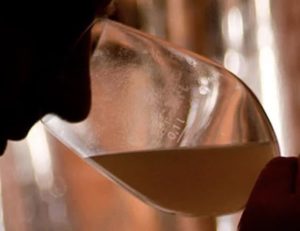
Acidity and pH (Australian Wine Research Institute)
Why is pH important? The pH of juice or wine is important to know as it plays a critical role in many aspects of winemaking, in particular wine stability. Boulton et al. (1996) writes that pH influences microbiological stability, affects the equilibrium of tartrate salts, determines the effectiveness of sulfur dioxide and enzyme additions, influences the solubility of proteins and effectiveness of bentonite and affects red wine color and oxidative and browning reactions.
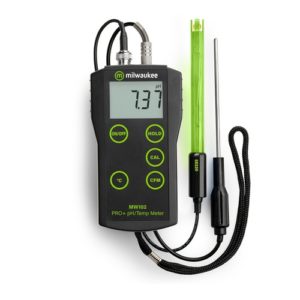
Understanding the Basics of pH Meters (WineMaker)
After some convenience items like a racking cane and a wine thief are added to your winemaking equipment arsenal, a quality pH meter should be one of your next investments. Being able to get an accurate read on where your wine’s pH lands on the spectrum has huge implications not only for flavor and balance but more importantly its microbial stability and impact on sulfite additions. It is probably the single most important number you can obtain while making wine.
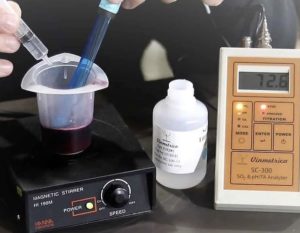
Managing Sulfites in Wine (Smart Winemaking)
In winemaking, SO2 is the first line of defense against oxidation and microbial spoilage and a key contributor to a wines aging potential. As a winemaker, you are intentionally allowing the fruit juice to decompose into wine (thank you yeast!), but stopping it before it continues the decomposition cycle to volatile acids like vinegar and then later into water, as would happen in nature.

Testing the Must for Sugar Content, pH and TA (MoreWine!)
Before you add the yeast, you need to test the must to determine if any additions/corrections are needed. Very rarely will you get a grape that naturally has the required balance of acids, sugars, and pH necessary to create a harmonious wine. When one or more of these elements are out of their ideal ranges, the quality of the wine suffers.
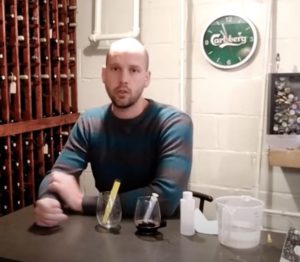
Measuring TA in a Wine with a pH Meter (The Home Winemaking Channel)
This seven-minute video, shows a titration method of measuring TA in a wine but rather than using an indicator solution and a visual color change, we are using a pH meter to verify when enough NaOH has been added to reach a pH of 8.2. Once the amount of sodium hydroxide needed is known, a simple calculation can tell you the TA of your wine. This method is easy to do at home.

How to Use a Hydrometer for Winemaking (OldManStino)
In this three-minute video, we discuss how to properly use a hydrometer, the science behind how it works, and what some of the common scales listed on the hydrometer are (Specific Gravity, Potential Alcohol, and the Brix scale).
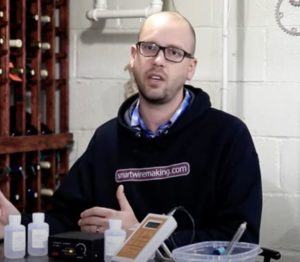
Measuring Sulfites in a Wine – Make Wine Like a Pro (The Home Winemaking Channel)
If you are serious about winemaking, you will want to get serious about SO2 management. In this 17-minute video, we will be performing a Free SO2 testing on several wines. To make the test much easier, I am using the Vinmetrica SC-300, which also tests pH, TA as well as SO2.
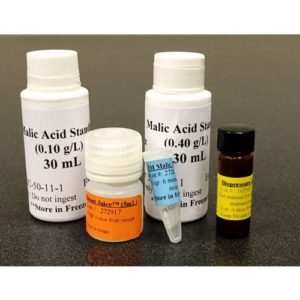
Malolactic Chromatography Testing (MoreWine!)
Malolactic fermentation (MLF) is a winemaking process involving a special bacterial strain that metabolizes the malic acid naturally found in grapes into lactic acid. Lactic acid is a weaker acid than malic acid so the effect of this conversion is a decrease in the wine’s acidity along with a corresponding raise in the wine’s pH. As an additional benefit, the bacteria also add mouthfeel and complexity to the wine.

